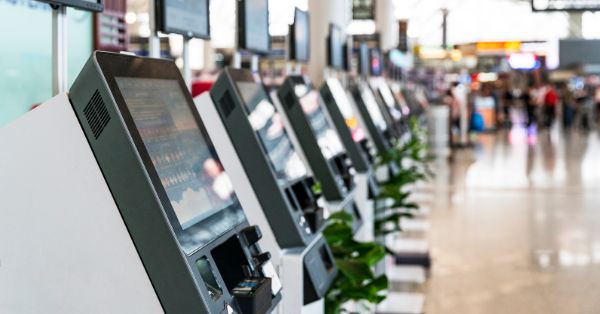As global air travel rebounds and passenger volumes rise, airports and airlines face mounting pressure to boost efficiency, streamline operations, and deliver a safer, cleaner, and more seamless passenger experience. To meet these demands, the aviation industry is turning to one of the most transformative technological forces of our time: autonomous systems.
From self-driving ground support vehicles to intelligent cleaning robots and advanced surveillance drones, airports are steadily becoming testbeds for automation at scale. These technologies promise to free up valuable human resources, reduce turnaround times, enhance safety, and create a resilient aviation ecosystem ready to handle growing operational complexities.
This article explores how autonomous technologies are reshaping the aviation landscape, expanding on real-world examples, the value they bring, and what industry leaders are learning as they deploy them. For airports and airlines alike, understanding the practical benefits, deployment challenges, and future potential of autonomy is now an operational and strategic imperative.
Why Autonomous Systems Matter for Aviation
The modern airport is one of the most complex operational environments in the world. It functions like a small city, moving millions of people and tons of cargo every day through tightly choreographed workflows. Hundreds of interdependent processes — from aircraft refueling to baggage transport to passenger boarding — must run like clockwork to avoid costly disruptions. Historically, these processes have relied heavily on human labor and manual coordination.
However, growing labor shortages, increasing passenger volumes, tightening schedules, and the constant pressure to keep costs down are testing the limits of these traditional models. Manual methods, no matter how experienced the staff, can’t always guarantee consistency, speed, or the round-the-clock resilience required by today’s hubs.
This is where autonomous systems come in. They offer a scalable way to take over repetitive, labor-intensive, and often dangerous tasks, from patrolling vast airfield perimeters in the middle of the night to towing heavy equipment across congested ramps. Unlike humans, robots and AI-powered machines don’t fatigue, can run 24/7 with minimal downtime, and can produce consistent, repeatable results.
Equally important, autonomy allows human teams to focus on what they do best: judgment, safety oversight, and passenger service. By offloading routine tasks to machines, airports can maintain higher productivity and safety levels while empowering staff to handle exceptions, emergencies, and high-value interactions.
Real-World Deployments: Automation in Action
Around the world, airports are experimenting with and deploying autonomous systems in ways that were once considered futuristic, and these deployments are growing bolder each year.
Surveillance Drones for Perimeter Security:
One powerful use case is security drones. Securing an airport’s vast perimeter — which can span dozens of kilometers — is costly and complex. Traditional vehicle patrols or static cameras have limitations: blind spots, limited speed, or heavy manpower requirements. Autonomous drones equipped with high-definition cameras, thermal sensors, and AI detection can patrol entire fence lines day and night. They can follow pre-programmed routes or respond in real time to alarms. Some airports pair drones with smart analytics that can distinguish between wildlife intrusions, unauthorized vehicles, or suspicious human activity, reducing false alarms and freeing security teams to focus on verified threats.
Automated Jetway Positioning Systems:
Another tangible example is automated jet bridges. Even minor misalignments when docking a jetway can delay passenger disembarkation and cause damage to aircraft doors. Traditionally, this requires a skilled operator who manually aligns the bridge. Modern automated systems use laser-guided sensors, cameras, and AI to line up the bridge perfectly every time, regardless of weather or visibility conditions. Some systems can even detect aircraft type and adjust automatically. This precision shortens turnaround times — a key KPI for airlines — and improves safety for both passengers and ground crew.
Robotic Baggage Handling:
Few things frustrate passengers more than lost or delayed bags. Yet the behind-the-scenes process of moving luggage involves tight timelines and thousands of bags changing hands. Forward-thinking airports are piloting autonomous baggage vehicles and conveyor robots that transport luggage directly from check-in to aircraft cargo holds. Using RFID tracking, collision avoidance, and dynamic route planning, these systems move bags more efficiently and with fewer errors than conventional belt systems or manually driven carts. Some airports are combining robotic sorting with AI-based analytics to forecast baggage peaks and allocate resources accordingly.
Cleaning Robots for Hygiene and Safety:
Autonomous cleaning robots were once a novelty; now, they’re part of standard airport hygiene protocols, especially since the COVID-19 pandemic. These robots do more than vacuum or mop. Many are equipped with UV-C lamps or electrostatic sprayers to disinfect high-touch surfaces thoroughly and continuously. Some models are AI-driven, able to detect spills, debris, or heavily trafficked zones and adapt their cleaning patterns on the fly. By automating repetitive cleaning tasks, airports can maintain higher hygiene standards, reassure passengers, and free janitorial teams to focus on specialized sanitation tasks or customer support roles.
Efficiency, Safety, and the Passenger Experience with Automation
Autonomous systems are not just about flashy robots — they deliver measurable, practical outcomes that impact the core pillars of aviation: operational efficiency, safety, and the passenger journey.
Operational Efficiency:
Time is money in aviation. Every minute saved on the tarmac, at the gate, or in baggage handling translates to significant cost savings and improved on-time performance. Automation reduces bottlenecks, standardizes repetitive tasks, and optimizes asset use. It also helps airports and airlines handle sudden surges in passenger numbers without proportionally increasing labor costs.
Enhanced Safety:
Airports are bustling work zones where heavy machinery, human workers, and aircraft operate in tight quarters. Errors, fatigue, and miscommunication can have serious consequences. Autonomous vehicles, drones, and robots can perform inspections or transport loads in hazardous areas, reducing the risk of accidents. Machines do not get distracted or exhausted — their reliability can reduce workplace injuries and enhance regulatory compliance.
Passenger Experience:
Travelers may never directly see an airside robot repositioning a jet bridge or an autonomous tug moving baggage, but they will feel the benefits: faster boarding, fewer delays, shorter wait times for luggage, and cleaner, safer terminal spaces. Combined, these improvements reduce stress and elevate the overall perception of the airport and airline brand.
Challenges and Considerations of Autonomous Systems in Aviation
Despite the promise of autonomy, deploying it at scale comes with unique challenges that airport operators, airlines, and regulators must address thoughtfully.
Integration Complexity:
New autonomous tools must seamlessly plug into highly regulated, safety-critical environments that rely on legacy systems and carefully choreographed workflows. Any new robot or drone must communicate with air traffic control systems, ground crew operations, security networks, and asset management platforms, without introducing new failure points.
Cybersecurity and Data Privacy:
Each autonomous machine is also a connected node — a potential target for hackers. A cyberattack on an autonomous fleet could disrupt entire airport operations. This means operators must invest in robust encryption, secure data channels, and continuous monitoring to defend against threats and comply with strict aviation security standards.
Workforce Impacts:
Automation inevitably changes the nature of work. While it replaces some repetitive manual tasks, it also creates demand for new skills, such as operating, maintaining, and managing fleets of autonomous vehicles and AI systems. Successful rollouts require upskilling staff, clear communication about job roles, and collaboration with labor unions to ensure smooth workforce transitions.
Regulatory and Safety Certification:
Drones, autonomous tugs, or robotic vehicles operating near aircraft must meet stringent aviation safety standards. Gaining certification involves rigorous testing and approvals from national aviation authorities. For technologies like drones, regulations are still evolving, and operators must work closely with regulators to ensure safe, lawful use.
Future Trends: What’s Next for Aviation Automation
Looking ahead, the vision for autonomy in aviation goes far beyond a handful of isolated robots or drones. The next frontier is fully integrated, AI-coordinated ecosystems where machines communicate with each other, human teams, and digital twins in real time.
Airports are already experimenting with:
- Swarm drones for simultaneous wildlife management, FOD (foreign object debris) detection, and perimeter checks.
- Autonomous cargo convoys that coordinate vehicle movements for faster freight transfer.
- Driverless pushback tugs that reposition aircraft more safely and efficiently, freeing skilled operators to oversee multiple units simultaneously.
- Predictive maintenance robots that roam airfields, terminals, and hangars inspecting pavement, lighting, or jetways for cracks, corrosion, or wear before failures occur.
Supporting these advances will require high-performance private wireless networks, 5G connectivity, advanced sensor fusion, and AI that can process massive volumes of real-time data with split-second accuracy. Digital twins will play a growing role too, letting operators model, test, and optimize entire workflows in a virtual replica before committing to live rollouts.
Final Thoughts: Autonomy as a Competitive Advantage
The airports and airlines that embrace autonomous systems today are positioning themselves for tomorrow’s competitive advantage. They will have more resilient operations, the flexibility to scale during peak seasons or crises, and the agility to deliver a smoother, more satisfying passenger journey.
For passengers, the sight of a cleaning robot gliding across a concourse or a drone hovering over a fence line is no longer science fiction — it’s a reassuring signal that the airport they’re traveling through is investing in innovation, safety, and service excellence.
In aviation’s next era, autonomy isn’t just about machines taking over tasks; it’s about people and intelligent systems working together to navigate the skies more safely, efficiently, and sustainably than ever before.
Explore More from the Connected Aviation Series
Continue your journey into the world of smart, connected airports with our in-depth Connected Aviation series:
-
Why Private Networks Are the Future of Smart Airports — Understand why dedicated connectivity is critical for modernizing airport operations, passenger experiences, and safety systems.
-
How IoT and Digital Transformation Power Smart Airports — Explore how sensors, real-time data, and integrated platforms drive operational efficiency from curb to gate.
-
How Autonomous Systems Are Automating Airports — Dive into the role of autonomous vehicles, robotics, and smart logistics in future-ready terminals.
-
Inside and Outside the Terminal: A Case Study — Get an insider look at how connected systems transform landside and airside operations for airports big and small.
-
Benefits of Private Networks and Smart Airports — See the real-world benefits of deploying robust, dedicated networks to enable scalable digital transformation.
Strengthen Your Connected Aviation Strategy
Get practical insights on deployment models, operational use cases, and how connected aviation enhances safety, sustainability, and passenger satisfaction. Align your roadmap with best practices for IoT integration, private 5G, autonomous systems, and digital platforms powering smart airports globally.
-
Access More Aviation Use Cases & Deployment Insights: Private Network Deployment & Use Cases
-
Discover Related Industry Innovations: Aviation & Connected Industries
-
Explore TeckNexus Solutions for Aviation & Beyond: TeckNexus Solutions
























